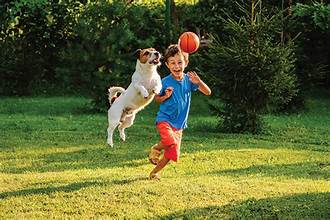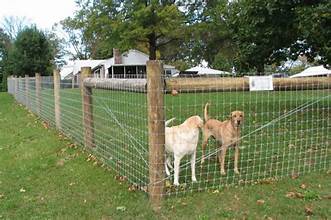Digging is a natural behavior for dogs, but it can sometimes lead to frustration, significantly if it affects your carefully landscaped yard or garden. Understanding the reasons behind your dog’s digging is the most critical first step in addressing and redirecting this behavior. We’ll delve into the various needs and instincts that drive dogs to dig and provide practical strategies to manage it, fostering a deeper connection with your furry friend.
Why Do Dogs Dig?
Dogs dig for various reasons, often rooted in their instincts or specific needs. Here are some of the most common:
1. Boredom and Lack of Stimulation
A bored dog may dig to entertain itself, especially if it doesn’t receive enough physical or mental stimulation.
- Signs of boredom:
Destructive behavior, excessive barking, and restless pacing.
2. Seeking Comfort or Shelter
In hot weather, dogs may dig to create an excellent lie-down spot. Similarly, digging might help create a protective shelter during cold or wet weather.
3. Natural Instincts
Certain breeds, like Terriers or Dachshunds, were historically bred to dig for hunting purposes. This instinct can remain strong even if they’re not hunting pests.
4. Burying Valuables
Dogs often bury food, toys, or other treasures to keep them safe, a behavior inherited from their wild ancestors.
5. Curiosity and Exploration
Dogs are curious creatures. They might dig to explore interesting smells or sounds, such as the scent of buried food or the noise of underground critters.
6. Separation Anxiety
Some dogs dig near fences or doors to try and escape when they’re experiencing separation anxiety or a desire to roam.
How to Redirect Digging Behavior
1. Provide Physical and Mental Stimulation
A tired dog is more likely not to dig out of boredom.
- Exercise:
Ensure your dog gets daily walks, playtime, or off-leash running.

- Enrichment:
Use puzzle toys, treat-dispensing balls, or games like hide-and-seek to engage their mind.
2. Create a Digging Zone
If your dog loves to dig, give them a designated area where digging is allowed.
- How to Set It Up:
Fill a sandbox or specific patch of the yard with loose soil or sand. Bury toys or treats to encourage them to dig there instead of your garden.
- Training:
Praise and reward your dog when they dig in the appropriate spot.
3. Address Environmental Factors
If your dog is digging for comfort, make adjustments to their environment.
- Provide Shade and Water:
In hot weather, ensure they can access a cool area and plenty of water.
- Offer Shelter:
Provide a cozy dog house or bring them indoors for cold or wet conditions.
4. Limit Access to Temptations
If digging is driven by curiosity or pests:
- Eliminate Burrowing Critters:
Use humane pest control methods to remove moles or gophers.
- Secure Tempting Areas:
Block off garden beds or areas with exciting smells using fencing or deterrents.
5. Address Anxiety or Escape Attempts
If your dog digs near fences or doors:
- Spend More Time Together:
Separation anxiety can improve with additional bonding and consistent routines.
- Secure Fencing:
Reinforce the base of your fence with chicken wire or concrete to ensure your yard is escape-proof.

- Training:
Work on recall and commands like “stay” to reduce escape attempts.
6. Redirect with Positive Reinforcement
Whenever you notice your dog starting to dig in an unwanted area, remember that you can redirect their attention. Use positive reinforcement to train them effectively.
- Distract:
Clap, use a firm “no,” or call their name to interrupt the behavior.
- Redirect:
Encourage them to engage in appropriate activities, like playing fetch or digging in their designated spot.
Activities to Channel Digging Instincts
Treasure Hunt
- Bury toys or treats in their digging zone for them to find.
- Use toys with hidden compartments to simulate the thrill of digging and finding a “prize.”
Scent Work
- Dogs with a strong sense of smell may enjoy scent-based games. Hide treats around the yard for them to sniff out.
Training Sessions
- Teach basic commands or fun tricks to mentally engage your dog and distract them from destructive digging.
When to Seek Professional Help
If digging persists despite your efforts or is accompanied by other concerning behaviors like excessive barking, destructive chewing, or aggression, consult a professional dog trainer or behaviorist. It can help identify issues and create a tailored plan.
Conclusion
Digging is a natural behavior for dogs, but you can manage it effectively with patience, training, and redirection. By understanding why your dog digs and meeting their needs for stimulation, comfort, or exploration, you can protect your yard and ensure your pup stays happy and fulfilled.





Pingback: Beyond The Bald: The Heart Of The Chinese Crested - Positvley Pets